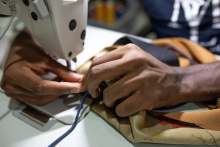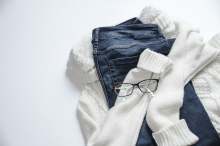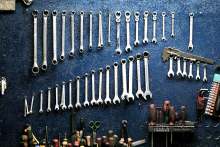Buying clothes from charity shops
Charity shops are often a popular choice when looking to buy secondhand. There's often several different shops in most towns, including local charities and larger national UK charities.
But as with high street clothing shops, they're not all the same.
How do charity shops compare on issues like animal testing and highest paid employees?
We have looked at seven high street charity shops in the UK to see how they compare on issues like pay, funding animal testing, and charitable spending. We choose the seven with the largest number of shops: Age UK, British Heart Foundation, Cancer Research UK, Mind, Oxfam, Salvation Army, and Sue Ryder.
Table of seven large high street charity shops and their expenditure, staffing and animal testing position
| Charity shop |
Number
of
shops |
Funds
animal
testing? |
Income
(millions) |
Expenditure
on
charitable
activities (millions) |
Charitable
spending –
% of total
expenditure
spent on
charitable
activities |
Highest
paid CEO
(from 2022
Annual
reports
where
available) |
Highest
paid
employee/s |
Number
of staff
paid
over
£60,000 |
Charitable
activities |
| Age UK |
299 |
no |
£125.9 |
£62.8 |
54% |
n/a |
£200-
250,000 |
52 |
Older people |
| British Heart Foundation |
691 |
yes |
£351.7 |
£87.7 |
29% |
n/a |
£190-
200,000 |
96 |
Cardiovascular
research |
| Cancer Research UK |
589 |
yes |
£718.7 |
£425.0 |
66% |
£263,100 |
£250-
300,000 |
261 |
Cancer
research |
| Mind |
156 |
no |
£73.1 |
£37.1 |
63% |
£159,000 |
£140-
150,000 |
33 |
Mental health |
| Oxfam |
564 |
no |
£373.0 |
£230.9 |
70% |
£120,564 |
£300-
350,000* |
70 |
Poverty relief |
| Salvation Army |
228 |
no |
£281.9 |
£128.8 |
57% |
n/a |
£150-
200,000 |
51 |
Vulnerable &
disadvantaged
people |
| Sue Ryder |
407 |
no |
£112.7 |
£54.3 |
51% |
n/a |
£140-
150,000 |
32 |
Health care |
NB Income, expenditure, pay and staff from Charity Commission figures for year ending 31 March 2022.
* Reflects packages which include redundancy payments made to international staff as a result of organisational changes and as required under national legislation in the countries where they were based.
Charities and animal testing
British Heart Foundation and Cancer Research UK are two health charities listed by Animal Aid as funding animal testing. Age UK used to fund animal research but it stopped in 2015. The other health charities, Mind and Sue Ryder, do not fund animal research.
Testing on animals is both cruel and medically unsound, giving unreliable results that cannot be applied to humans because of the fundamental differences between humans and animals. 92% of drugs fail in human clinical trials despite appearing safe and effective in animal tests, often on safety grounds or because they do not work.
Oxfam used to offer live animals as part of its Oxfam Unwrapped gift services but it no longer does. It does still offer beekeeping.
Charities, staff, pay and charitable expenditure
500 Oxfam GB employees in Oxfam’s shops and offices went on strike in December over pay. It was the first time industrial action has been taken at Oxfam GB, which employs more than 1,800 people in the UK. An agreement was reached within a week. In 2018 and 2021, reports arose about sexual misconduct by Oxfam staff in Haiti and Congo. 43 members of staff were dismissed and Oxfam has now significantly improved its safeguarding strategy.
More positively, Oxfam has been a key partner with Ethical Consumer over corporate tax avoidance and workers’ rights in global supply chains.
The Salvation Army is a church charity. Around 30% of its charitable expenditure was on ‘church and evangelism programmes’ – Christian worship and the teaching and promotion of the Christian message at their churches.






